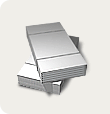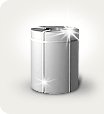Today, floor heating and pipeline heating are commonplace, and this is especially important during the winter cold. It is not enough to use only thermal insulation materials. Electric heating cables are an effective solution.
Areas of application of heating cables
With the help of the heating system, it is possible to protect different types of pipelines from freezing. This approach can be used for both external and internal channels. Heating cables can solve a number of important tasks:
• electrical heating of tanks and pipelines ;;
• ensuring the required temperature when transporting liquid substances;
• soil heating;
• heating of gutters;
• heating of open areas;
• creating a warm floor.
All existing types of heating cables differ between design features and operating principles. The most widespread are resistive and self-regulating.
The heating of the cable occurs due to the passage of an electric current through it. The structure can consist of one or two cores. The heating element itself is metallic and insulated.
A shield is used to reduce the amount of emitted electromagnetic waves. It can be crafted from lead foil or copper.
Resistive cables
This type of cable can have one or two cores. In the first case, the structure consists of one heating core, which is insulated. Both sides of the cable are connected to electricity.
The peculiarity of the two-core design is that a conductive one also passes next to the heating core, which is closed at the end of the cable. In this case, one end is connected to electricity.
It should be noted that often when using a resistive cable, a thermostat is additionally activated. It also controls the generated heat.
Self-regulating cables
This type of construction differs from the one described above both in the principles of operation and in the internal structure. The cable already has two conductors connected by a semiconductor matrix.
If you correctly select the power of the self-regulating cable, then you do not need to use the thermostat. In addition, the advantage of the cable is the ability to shorten its length.






